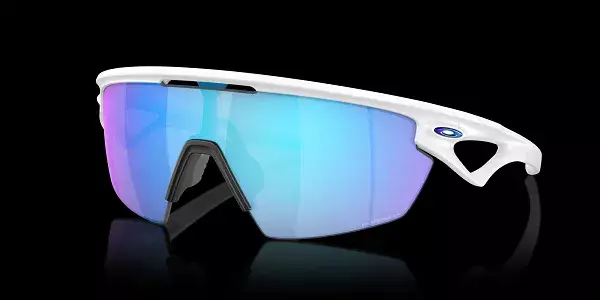As augmented reality (AR) technology continues to evolve, companies like Meta are positioning themselves to redefine the wearables landscape. Drawing on various reports and insights, it becomes evident that Meta, formerly known as Facebook, is gearing up to release innovative smart glasses tailored for athletes, while also navigating substantial market dynamics. This article delves into Meta’s strategic direction, the anticipated features of its new device, potential hurdles, and the broader implications of their plans.
Meta’s forthcoming smart glasses mark a significant collaboration with Oakley, renowned for its athletic eyewear. The new glasses, based on Oakley’s “Sphaera” model, are expected to enhance athletes’ performance through integrated data tracking capabilities. This innovative direction borrows from Oakley’s established reputation, which could inspire confidence among consumers seeking to augment their training with advanced technology. Notably, the glasses are designed with a single, central camera, streamlining weight without compromising functionality.
The partnership has deeper roots; Meta’s investment in EssilorLuxottica, Oakley’s parent company, solidifies its access to high-quality frames that blend performance with style. This relationship is strategic, allowing Meta to leverage Oakley’s expertise while setting the stage for future developments in AR wearables. The combination of fashionable design and functional data tracking could appeal to a core group of fitness enthusiasts, potentially driving early adoption of Meta’s product line.
Reports indicate that Meta is poised to unveil the next version of its Ray-Ban Stories smart glasses, now dubbed “Ray Ban Meta.” The introduction of a heads-up display signals a critical evolution in this product line. Users can expect features like notifications and visual media displayed within their field of vision. Although this version of the smart glasses may not yet fully engage with augmented reality, it represents a stepping stone towards more profound functionalities, including the capability to run basic applications.
Looking ahead, Meta projects a timeline that extends into 2027 for the development of fully AR-enabled glasses, suggesting a patient and calculated approach to innovation. This timeline not only allows Meta to fine-tune their technology but also helps create a sustainable production model, addressing cost concerns that are vital for mass-market appeal.
A recurring theme in Meta’s strategy is cost management, especially when juxtaposed with competitors like Apple, whose VisionPro device is priced at an eye-watering $3,499. CEO Mark Zuckerberg has pointedly critiqued such pricing, asserting that affordability is essential for widespread adoption. In contrast, Meta aims to ensure its smart glasses remain accessible, with new models anticipated to retail for about twice the price of the current offerings. The long-term goal is for AR-enabled glasses to align in price with traditional high-end electronics, such as smartphones and laptops.
However, achieving affordability while maintaining quality poses a significant challenge. Additionally, Meta’s dependency on hardware components sourced from China raises concerns, especially in the context of fluctuating trade policies under various political administrations. The potential for tariffs may adversely impact production costs, compelling Meta to navigate regulatory landscapes to mitigate financial setbacks.
Beyond the technological and financial dimensions, Meta’s vision hinges on societal acceptance of smart glasses. Zuckerberg’s assertion that smart glasses could someday eclipse smartphones highlights the need for a cultural transition that embraces wearable tech as a staple of daily life. This shift demands not only consumer readiness but also widespread infrastructure to support AR functionalities seamlessly.
Additionally, Meta must combat skepticism surrounding privacy and user data. As the company previously faced scrutiny regarding its data practices, building trust with consumers will be crucial in fostering an environment conducive to acceptance of new technology. Clear communication about data security and user engagement will be foundational to this trust.
Meta’s ambitious plans for AR glasses emblemize a broader trend in the wearables market. With collaborative efforts like the partnership with Oakley, evolving product features, and a focus on affordability, the company is poised to make significant strides in the industry. However, it must adeptly navigate challenges related to cost management, regulatory environments, and societal acceptance to realize its vision.
As Meta pushes forward, the outcome will depend not only on technological breakthroughs but also on fostering meaningful connections with consumers, addressing market dynamics, and engaging with policymakers to create an environment that champions innovation while safeguarding public interests. The road ahead is complex, yet it holds the promise of a transformative era for augmented reality.

